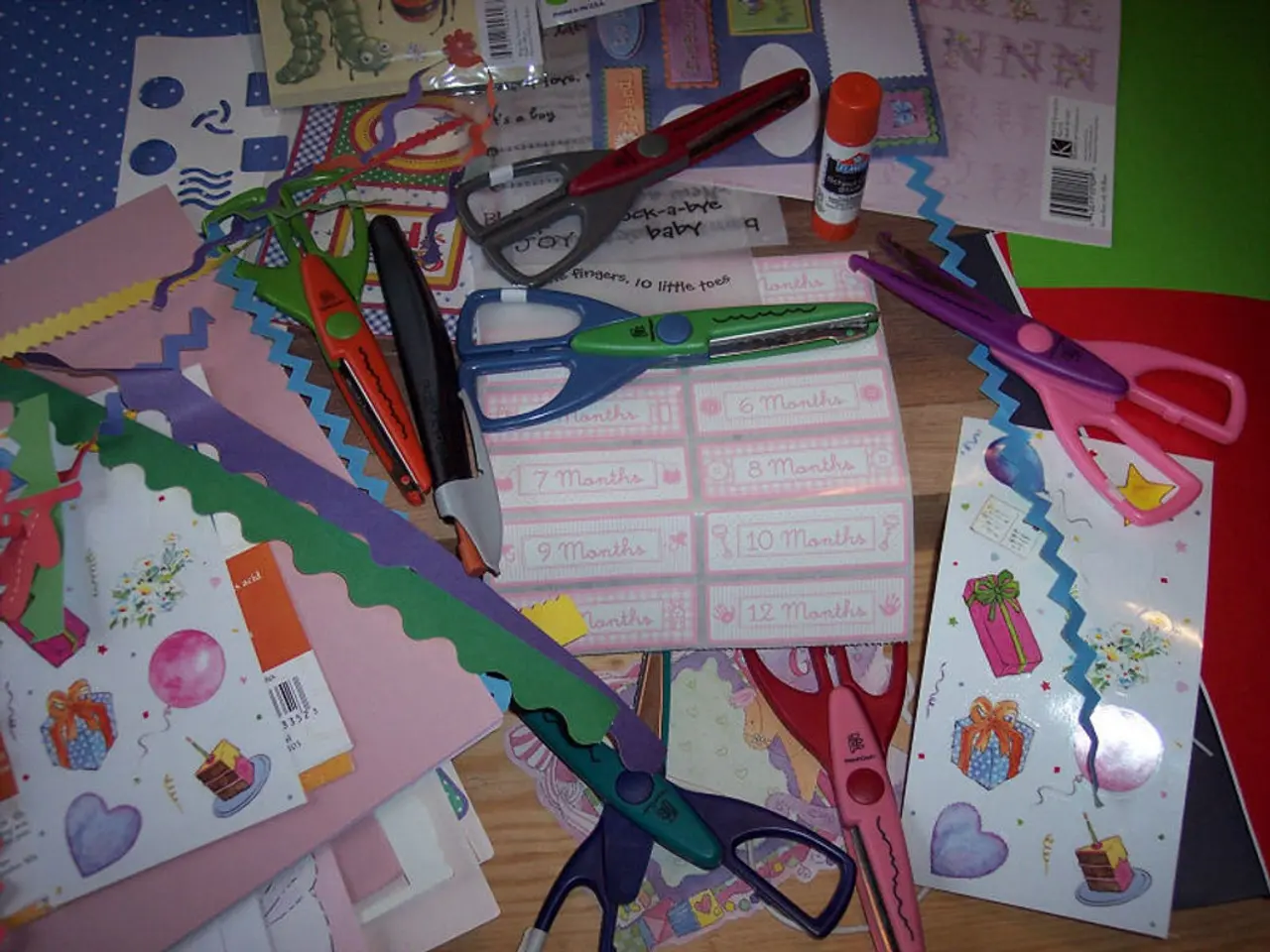Errors in Streamlining Spaces: What to Steer Clear of
Decluttering is not just about moving things around or hiding them out of sight. It's about getting rid of excess items and creating a more manageable, less cluttered space. Here are some common decluttering mistakes to avoid for a more effective process.
Not Decluttering Before Organizing
Jumping straight into organizing without removing excess items often leads to just rearranging clutter instead of reducing it. Decluttering first creates a manageable amount of stuff to organize properly.
Aiming for Perfection
Trying to make your space look like a perfect social media image can be unrealistic and unsustainable. Instead, focus on removing clutter and creating a system that works for your lifestyle, even if it’s not visually flawless.
Making All Decisions Immediately
Being rigid about getting rid of everything on the spot can cause stress or resentment. It's helpful to delay decisions on uncertain items, using strategies like an 'expiry date' box, where you revisit items later to decide if they are truly needed.
Trying to Declutter Too Much at Once
Moving from one area to another without finishing can be overwhelming. Focusing on completing one area or category before starting another creates a sense of accomplishment and momentum.
Poor Organization Planning, Especially in Kitchens
Filling cabinets randomly or leaving items in original packaging creates inefficiency. Organizing essentials by frequency of use, using standardized containers, and labeling with expiry dates improve accessibility and maintenance.
Keeping Too Many Items Out or Organizing Without Removing Clutter
Leaving unused appliances or items on kitchen counters or around the home adds visual clutter and reduces convenience.
Counter Scraping and Sweeping Everything into a Junk Drawer
Decluttering is about getting rid of excess items, not just finding new ways to store them. Sweeping everything into a junk drawer, a box, or a random bag is not decluttering.
Rehoming Within the Home
Rehoming, or shuffling items from one spot to another, is not actual decluttering but just hiding clutter. Rehoming within the home can lead to items accumulating, even if they are passed to other family members.
Storing Clutter Out of Sight
Storing clutter out of sight, like taking a messy room and shoving everything under the bed or into the closet, is not actual decluttering.
Understanding the Difference Between Organizing and True Decluttering
Understanding the difference between organizing and true decluttering is important. Organizing is useful for tackling visual clutter but not effective for dealing with excess clutter. Decluttering is a thoughtful process of letting go and making intentional choices about what truly adds value to your life.
Resisting the Urge to Simply Rehome Items
Resisting the urge to simply rehome items without really reducing your possessions is crucial in decluttering. Swapping items that don't genuinely improve life or upgrade what you have does not count as decluttering.
Visual Clutter and Excess Clutter
Visual clutter primarily affects the aesthetics of a space due to disorganization or poor arrangement of items. Excess clutter involves having too many items, beyond what is necessary or functional. Excess clutter can lead to a lack of space and hinder movement or usage of an area.
Be Cautious with Swapping Items and Understand that Merely Shuffling Things Around Doesn't Equate to Actual Decluttering
Moving your things to a storage unit, a shed out back, or even dumping them at your mom's or grandma's place does not count as decluttering. Swapping items that don't genuinely improve life or upgrade what you have does not count as decluttering. Swapping items that don't genuinely improve life or upgrade what you have does not count as decluttering. Visual clutter can make a space feel chaotic, even if the number of items is not excessive.
By avoiding these pitfalls, you can lead to a more manageable, less stressful, and more effective decluttering process overall.
- Decluttering your home first before organizing it helps in creating a manageable space that is less cluttered.
- Aiming for a perfect social media image in your space can be unrealistic and unsustainable; instead, focus on reducing clutter and creating a system that fits your lifestyle.
- Being inflexible about getting rid of items immediately can cause stress or resentment, so it's helpful to delay decisions on uncertain items.
- Trying to declutter too much at once can be overwhelming, so focus on completing one area or category before moving onto another.
- Poor organization planning, especially in kitchens, creates inefficiency. Organize essentials by frequency of use, use standardized containers, and label with expiry dates to improve accessibility and maintenance.
- Leaving unused appliances or items out around the home adds visual clutter and reduces convenience. Remove unnecessary items from kitchen counters and other spaces.
- Sweeping everything into a junk drawer or a random bag is not decluttering; instead, get rid of excess items.
- Rehoming items from one spot to another is not actual decluttering but just hiding clutter. Understanding the difference between organizing and true decluttering is essential, as organizing tackles visual clutter, while decluttering is about making intentional choices and letting go of excess items that don't add value to your life.




